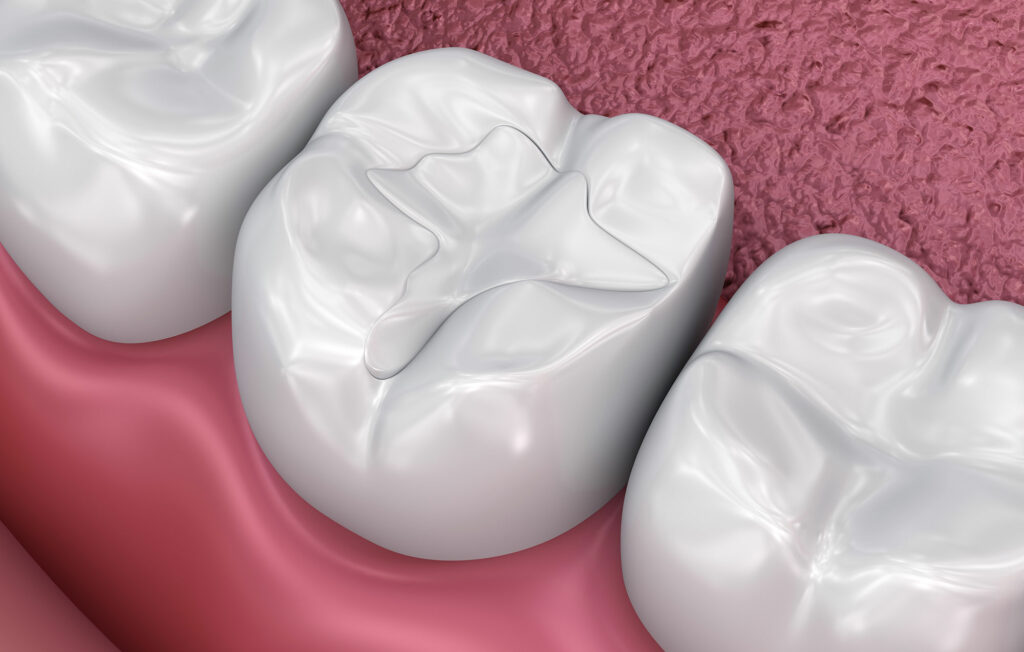Dental Fillings
 No matter how well you care for your teeth, cavities can still sometimes occur. When a cavity does develop, Dr. Zalesky at Aurora Hills Dental recommends treating it right away with a dental filling.
No matter how well you care for your teeth, cavities can still sometimes occur. When a cavity does develop, Dr. Zalesky at Aurora Hills Dental recommends treating it right away with a dental filling.
What Causes Tooth Decay and Cavities?
Our teeth are covered in a protective tissue (the hardest in the body) called enamel. Enamel is comprised of minerals like calcium and fluoride. Tooth decay is when a soft spot develops on the enamel. Cavities (also called dental caries) are holes in the enamel.
Tooth decay occurs as a result of bacteria living on the surface of your teeth. These bacteria produce acids as a waste product. Acid breaks down the minerals that make up your tooth enamel, leading to soft spots (minor tooth decay) and eventual dental caries or cavities (small holes in your tooth enamel).
In addition to oral bacteria, a combination of other factors can contribute to tooth decay, such as practicing poor oral hygiene, not getting enough fluoride and other minerals, and regularly consuming sugary and/or highly acidic foods and drinks.
Treating Cavities: What Is a Dental Filling?
Early forms of tooth decay (soft spots) can sometimes be reversed with professional fluoride applications and improved oral hygiene, but cavities must be treated with a dental filling.
A dental filling is a treatment for a cavity that’s designed to fill the hole in a patient’s enamel, strengthen and restore the tooth’s original form, and prevent further decay and infection.
The most common material used for filling cavities used to be silver amalgam, which was made from a combination of metals. Today, however, the most common material used for dental fillings is composite resin, which is a hard plastic that can be dyed to match the surrounding tooth. Fillings can also be made from porcelain.
Why Do Cavities Need To Be Filled?
Cavities must be filled to stop the progress of the tooth decay and to prevent the bacterial infection of the tooth from worsening. Left unaddressed, cavities grow larger, spread to the interior of the tooth, and can eventually result in the need for a root canal or even the loss of the tooth.
Additionally, this kind of unchecked bacterial growth can also lead to problems like periodontal disease.
How To Know If You Have a Cavity: Signs and Symptoms
In their early stages, cavities often don’t cause any symptoms, and you won’t know you have one until the dentist tells you that you do. More advanced tooth decay that has exposed the layers of the tooth beneath the enamel can cause symptoms such as pain and tooth sensitivity.
If you have a large enough cavity, you might also be able to see it on your tooth. They usually look like small brown or black spots on the tooth’s surface.
What To Expect When You Need a Dental Filling
Getting a filling is a fairly simple procedure. To begin, Dr. Zalesky administers a shot of local anesthetic to numb the treatment area and ensure you remain comfortable throughout the procedure.
The cavity is then drilled, sterilized, and dried to remove all debris and bacteria from the area before the dental filling material is applied. Once applied and formed to resemble the original shape of your tooth, the dental filling is hardened and set using a special light.
After getting a dental filling, you can usually resume your normal activities the same day.
Dental Fillings at Aurora Hills Dental
Dr. Zalesky and the team at Aurora Hills Dental strive to help all of our patients achieve excellent oral health.
To learn more about cavities, preventing cavities, and treating cavities with dental fillings, we welcome you to contact our Aurora, Colorado office today.




